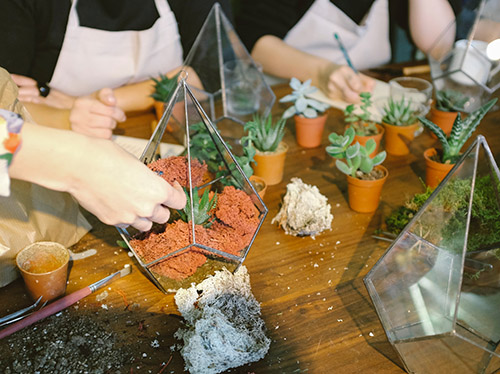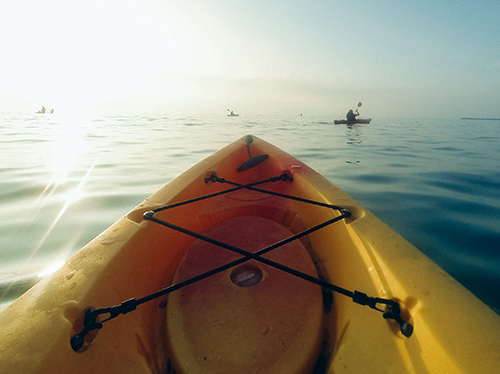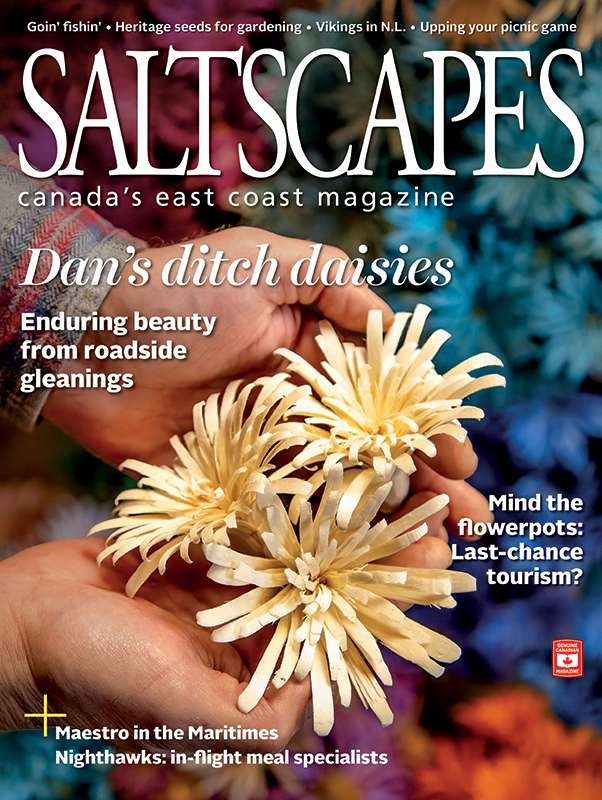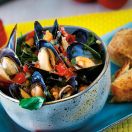It’s the law of the jungle: wild animals are born, and they die. But a brigade of Atlantic Canadians offers them safe haven when they’re somewhere in between, and vulnerable.
When a seagull is found impaled atop a church, a deer turns up for sale on Kijiji, or a hurricane blows a pelican onto the roof of a strip club, Nova Scotians look in one direction for rescue. The city’s digital bat signal scans the sky, and Hope Swinimer’s phone starts to ring.
By day, Swinimer is a mild-mannered administrator at the Dartmouth Animal Hospital, but by night—OK, by night and by day—she puts the hope in Hope for Wildlife, an animal rehabilitation centre on the rugged shoreline of Seaforth, NS. While other wildlife centres focus on a specific group of animals, like birds or reptiles, Hope for Wildlife takes in just about every wounded wild animal. Since 1997, Swinimer and her small team of volunteers have saved more than 15,000 creatures, from pregnant porcupines and orphaned raccoons to one-winged owls and half-crushed turtles. Hope for Wildlife is now a book and a television series on the Oasis channel.
Swinimer started HFW by accident, in 1995. A woman brought a wounded robin to the Dartmouth Animal Hospital; the veterinarians didn’t know what to do with it, so Swinimer took it to her home in Eastern Passage to heal. As her knowledge about rehabilitating wildlife grew, vets started consulting her about injured and orphaned creatures. She took more into her home, rescuing about 40 animals that first year.
The vets at the Dartmouth Animal Hospital volunteered to do any required operations or medical interventions, an agreement that stands today.
In 1996, the Nova Scotia Department of Natural Resources came knocking to tell her she needed a permit for the work she was doing. So Swinimer got a rehabilitation permit from the California-based International Wildlife Rehabilitation Council, and the Eastern Shore Wildlife Rescue and Rehabilitation Centre became Nova Scotia’s first licensed, privately owned wildlife rehabilitation centre.
Things went smoothly until one of her charges, a wounded skunk, stunk up the neighbourhood, and everyone agreed it would be a good time for the rehab to find a new home. Swinimer moved to a bigger site, in Seaforth, in 1997. She recruited a team of four volunteers, and handled about 200 animals that year. In 2001 she moved once more, this time to her dream location in Seaforth.
Today HFW has 75 volunteers—including Swinimer, who is not paid for her work—and rehabilitates 1,500 wild animals every year, from all over the province. It has one paid member of staff: Allison Dube, HFW’s coordinator and Swinimer’s right-hand woman.
Meeting the animals
Visitors are greeted at the first of two bright red barns on the sprawling compound. It’s used as an education centre and houses oddball creatures such as Topaz, an elderly parrot whose owner died, Cornelius, a corn snake found in a Halifax hotel, and Danny California, a toad that turned up in a lettuce shipment at Pete’s Frootique. These misfits are healthy, but unable to be released to the wild.
Across a dirt driveway is the second red barn; it houses a clinic and the main rehab facilities. Swinimer’s white house sits between the two.
It takes a good two hours to tour the facility and at every turn, someone needs Swinimer’s help—from a volunteer chasing geese waddling toward freedom, to a baby squirrel who needs to be hand fed. Her phone rings constantly. Some calls are for the wildlife centre, some for her day job and some for Homeward Bound City Pound, the dog and cat shelter she recently opened in Dartmouth’s Burnside Park.
Wandering through a wild garden behind the red education barn, she provides updates on some of her high profile rescues. Rod the Seagull, who was impaled by a lightning rod on Saint David’s Church in Halifax, summer 2010, was saved by a firefighter and sent to HFW to heal before being released.
Ralph the pelican—eventually determined to be a female—was blown onto the roof of Ralph’s Place, a strip club in Dartmouth, by Hurricane Earl in fall 2010. Ralph wintered at HFW while staff figured out how to get her home to North Carolina. Ironically, pelicans cannot be flown to the US, so Swinimer found a Good Samaritan willing to drive Ralph home, and the bird was released last summer.
Bella, the Kijiji deer touted as a “house pet,” was being sold online for $300. It’s illegal to sell wildlife; members of the DNR investigative unit posed as buyers, met with the seller and arrested him. Bella was sent to HFW.
Swinimer talks about Bella as she dons a surgical mask to enter the deer enclosure. It’s a big, grassy area surrounded by a chain link fence. Deer imprint easily on humans, taking them to be leaders of the herd. That makes it harder for them to return to the wild, so staff wear masks and don’t speak while putting food out. During Bella’s stay here she made no human friends and became unapproachable. That was good news—it meant the deer was soon able to return to the wild.
Swinimer has no medical training, and still relies on the doctors at Dartmouth Animal Hospital. She only recently helped in her first surgical procedure—the amputation of an owl’s wing.
“Oh my God, I almost passed out about three times!” she laughs. “It is gross! I don’t know how they do it.”
Arguing for humane treatment
Swinimer is unfazed by the continual chaos. “It’s not very often I get discouraged. Occasionally I do, but that’s usually from sheer exhaustion and the pressure of so many people wanting things,” she says. “It’s never the work itself with the animals.”
The only time her sunny demeanour clouds over is when critics suggest humans shouldn’t interfere with nature.
“We are not interfering,” she says. “We’re fixing and teaching people to fix what they’ve caused.”
While her wildlife occasionally gives her a bleeding finger, she’s no bleeding heart. She’s tough-minded and focused on getting the wounded animals rehabilitated and back into the wild. The unsentimental approach deters many a doe-eyed volunteer, as does the grim routine of death. Close to 40 per cent of the animals arriving at HFW die of their injuries or have to be euthanized. As Swinimer talks, she passes a rabbit in the second red barn that has just died.
She heads upstairs to check on a songbird for whom today will be its last day.
Swinimer herself has had a recent health scare: she was diagnosed with cancer. She took a rare day off to go for surgery, only for her doctors to find the cancer had disappeared.
She muses on death as she stops in the eagle enclosure, watching one of the mighty birds take an exploratory flight.
“I wonder if doing this type of rehab helps me deal with death in a different way than the general majority,” she says. “I guess you find a place for death.”
Her own death doesn’t worry her, she says, but the death of Hope for Wildlife does. It runs with its dedicated body of volunteers and animal doctors, but she is its life force.
“I’ve got to think, ‘How can this place exist when I’m gone? And that’s not easy, because not many people would take this on.” And yet, Swinimer is preparing HFW to exist more independently of her. She has been to rehab centres in British Columbia and California that started just like hers, but are now 40 years old and functioning independent of their founders. A new switchboard will handle the phone calls, and the website is being developed so more work can be done by others. HFW now has an onsite clinic that can handle 70 per cent of the medical interventions, and she hopes to attract a veterinary technician to cover the busy season.
Ultimately, she says, “I just think what we do is so important. We need to be doing it; I want to be doing it.”
For more information about Hope for Wildlife, go to hopeforwildlife.net.





.jpg)








